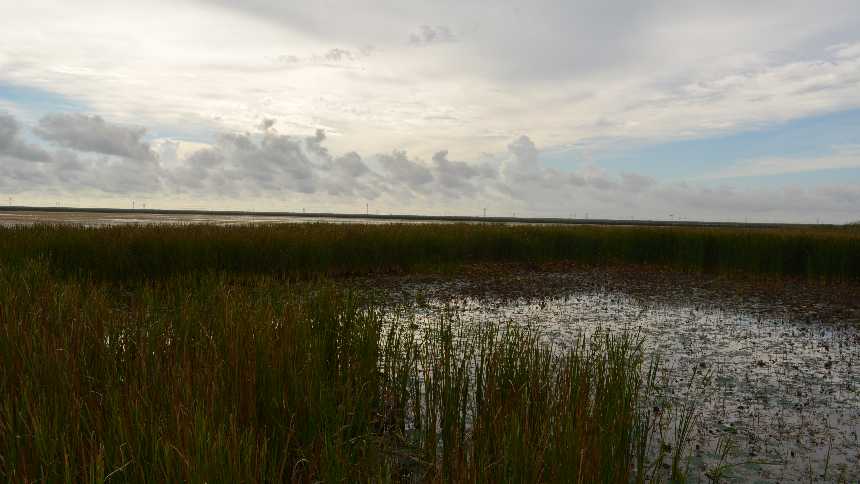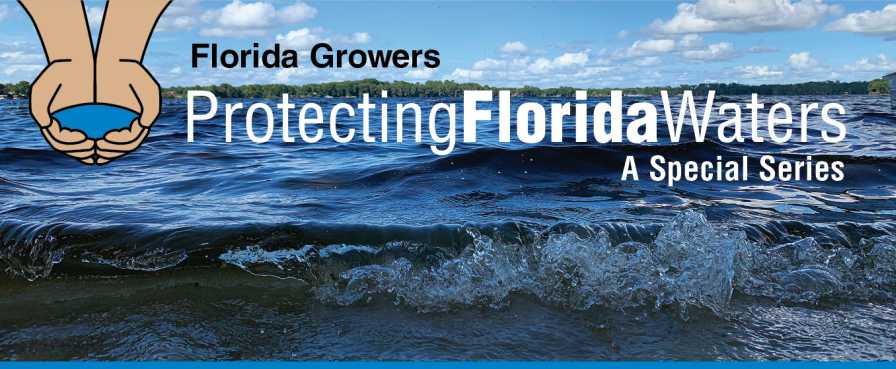Everglades Ag Area Growers Focus on Water Quality

Everglades Agricultural Area growers follow additional protocols to protect Florida waters. Photo by Frank Giles
No place in Florida faces more scrutiny when it comes to water than the Everglades and its surrounding areas. Water is the lifeblood of that sensitive ecosystem.
If you grow in the Everglades Agricultural Area (EAA) south of Lake Okeechobee, you feel the brunt of that scrutiny, especially when blue/green algae outbreaks occur in the estuaries and shorelines around the lake. But the headline news often misses all the things you do there to protect Florida waters.
Everglades Forever Act
The Everglades Forever Act, passed by the state of Florida in 1994, lays the groundwork to protect the ecosystem, and a good portion of the legislation focuses on the EAA. The Act calls for water entering the Everglades to carry only 10 parts per billion (ppb) of phosphorous. That’s equivalent to ¼ teaspoon poured into an Olympic-sized swimming pool. Phosphorous is the nutrient most harmful to the Everglades.
It mandates that growers in the EAA reduce phosphorous loads in water leaving the area by 25% of pre-BMP levels. Growers also are required to pay a $25 per-acre, per-year Everglades Privilege Tax. The tax funds public works projects — the other major component of the law. Stormwater treatment areas (STAs) are a big part of the plan to clean phosphorous out of water as it slowly drains toward Everglades National Park. In addition, growers in the area have imposed a $5 per-acre, per-year tax on themselves to fund research through the EAA Protection District to further improve their productivity while protecting the local environment.
Not only have EAA growers reduced phosphorus loads by 25%, they have reduced it on average by 57% over the years. This year, the phosphorus reduction was 68%. That’s no easy task when you consider that muck soil in the EAA is basically decayed plant matter and is high in phosphorous. The soil is about 800,000 to 2 million ppb. Compare that with 10 ppb, which is the ultimate standard going down to the Everglades.
Growers in Action
Derek Orsenigo, who farms with his father Paul, David Basore, and Davey Basore in the EAA, says protecting water must come with a standard operating procedure mentality. The operation, Growers Management Inc., grows a variety of crops including leafy greens, sweet corn, and sugarcane.
“We soil sample and follow UF/IFAS BMP [best management practices] recommendations with our crops and the 4R fertilizer principles (right source, rate, time, and place),” Derek Orsenigo says. “It makes sense because there are both environmental and economic benefits to doing so.”
Just this season, Orsenigo installed weather stations at all his farm locations both on the EAA muck ground areas and on sandy land fields. The stations were supplied by Highland Ag Solutions as part of its Highland Hub platform.
“The weather stations are nice because you can monitor your rainfall, wind speed, humidity, and dew points, so you can make educated decisions on what to do with irrigation based on the data,” Orsenigo says. “It updates every five minutes, and you can access the data via your phone and other devices.”
Other water-minded practices include the use of controlled-released fertilizer to avoid nutrient leaching and benefit crop growth. The farm also deploys rice in its rotation on muck ground for several reasons, including curbing soil subsidence — a major problem in the EAA. On sandy ground, a cover crop of cowpeas and sunn hemp is planted in the summer to break up crop cycles of sweet corn.
“With cover crops, we are seeing nitrogen-fixing benefits and suppression of nematodes,” Orsenigo says. “We’ve been growing the cover crops for five years now, and are seeing some increased organic matter in the soils and better cation-exchange capacity (CEC). All of this has nutrient management benefits.”
 This is the fifth in a series of articles featuring growers who are taking a proactive approach to protecting the water resources on and around their farms. The stories will investigate how production practices, equipment, and technology are helping growers in the Sunshine State do more to protect water. Come back next month for another installment.
This is the fifth in a series of articles featuring growers who are taking a proactive approach to protecting the water resources on and around their farms. The stories will investigate how production practices, equipment, and technology are helping growers in the Sunshine State do more to protect water. Come back next month for another installment.









